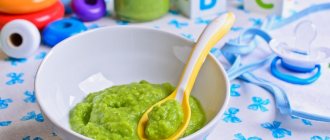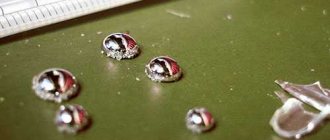The benefits of mother's breast milk are known to everyone, but sometimes, due to circumstances beyond our control, we have to resort to artificial feeding of a newborn. A mother's biggest fear is that the child does not get enough of the formula. Remember that overfeeding a baby is even more harmful than underfeeding. Drinking from a bottle is much easier than getting food from your mother's breast. Therefore, the child eats the formula faster and does not immediately feel full. When overeating, the baby begins to regurgitate, he may be bothered by gas or have a tummy ache.
How to choose suitable baby food?
Artificial nutrition for a newborn should be prescribed by a doctor - pediatrician or neonatologist. There are many varieties of baby food on the market to suit every taste and budget. If your baby was born full-term and has no problems with the gastrointestinal tract, in the first months an adapted milk formula is prescribed, the composition of which is most similar to the composition of breast milk. Formulas with partial adaptation are cheaper, but it’s still better not to skimp on a newborn. If a child has problems (lactase deficiency, allergies), they may prescribe fermented milk, dairy-free (soy-based), and goat milk formulas.
It is not always possible to choose the right food for your child the first time. At first, the parent must very carefully observe how the baby reacts to its nutrition. If the baby begins to spit up frequently, allergies or other negative changes appear, then the formula is not suitable. After analyzing the child’s condition, the pediatrician will prescribe a different diet. If the child’s diet is not suitable, it is not recommended to change it yourself.
Kabrita gentle nutrition based on goat milk
Kabrita infant formula based on goat's milk has an adapted protein composition. Goat's milk is closer in composition to breast milk than cow's milk; it is digested faster and easier than cow's milk, so feeding a newborn with a formula based on goat's milk is preferable. Such food is digested faster, absorbed better and reduces discomfort when switching from breastfeeding to artificial or mixed feeding.
Kabrita baby food is the most modern formula based on natural Dutch goat milk.
Kabrita formulas contain a unique fat complex, Digest X, which replicates the fat profile of breast milk. The mixtures are enriched with goat milk whey, which is rich in polyunsaturated fatty acids. Goat milk whey is perfectly absorbed and digested. All this helps to avoid constipation, increases energy metabolism and promotes better absorption of calcium in the child’s body. Goat's milk is ideal for natural, easy digestion.
- share with your friends!
Experts: Anna Ganina
How to properly prepare baby formula?
Baby formula is easy to prepare. It is important to follow certain rules.
- Be sure to read the instructions that came with your product. Only it spells out correctly - how much to pour, how much water to pour, at what temperature. Even if your pediatrician told you, re-read it anyway. We are all human, and people make mistakes.
- Do not prepare food for future use, as it can be stored for a very short time when prepared.
- Prepare everything you need: bottle, water, baby formula, measuring spoon.
- Pour water into the bottle. The water temperature for preparing mixtures from different manufacturers may vary. There is food that is diluted with water at 37 degrees, and some require a temperature of 70–80 degrees.
- Pour the powder into water.
Manufacturers often include a measuring spoon with which they measure the amount of dry mixture for a given total volume of ready-made food. Do not increase the dry component rate on your own to make the finished drink more nutritious. This can lead to obesity or gastrointestinal problems. Sometimes the order of pouring water and adding the mixture may change, since some powders dissolve very poorly in water and, when they fall on its surface, stick together in lumps, which are then very difficult to stir. - Mix the mixture thoroughly by shaking the bottle until smooth.
- Check the temperature of the mixture. Usually mothers check by placing a drop on the inside of the hand. The hot mixture needs to be cooled, and the cold mixture can be heated.
Advice
Never heat baby formula in the microwave! Microwave heating is uneven. If the temperature of the food is apparently low, there may be hotter areas inside it, which can lead to a burn to the child’s mouth and larynx. And bottles are often not designed to be heated in the microwave. You can warm up the mixture by placing the bottle in hot water (a temperature of 50 degrees will be enough).
How much formula does a newborn need?
All mothers are interested in how much a newborn should eat. The stomach of a newborn on the first day of life is very tiny - only 7 ml. Therefore, it is not surprising that at first he eats very little at one feeding, about 5 ml. However, already on the 3-4th day the volume of nutrition increases several times. There are guidelines for how much a newborn should eat, but remember that your baby is unique and may not always fit into the rules. If the baby was born weak, he may eat less. Large children can exceed the norm. Nothing wrong with that.
- On the first day of life, the amount of mixture at one time is 5–10 ml.
- On the second day, the amount of the mixture increases to 20 ml.
- On days 3-4 - from 20 to 60 ml.
- At the age of 1 week - 50–80 ml.
- At the age of 2 weeks - 60–90 ml.
- 1 month - 100-110ml.
Remember that these standards are very approximate and depend on the child’s weight and well-being. There is also a formula that can be used to calculate the daily volume of formula for a child, depending on how many days he is. This formula works for children up to 10 days: 70-80 ml (the daily amount of nutrition needed by a child on the first day of life) * P, where P is the number of days the newborn has lived. That is, if the child is 6 days old, then the daily volume of the mixture will be 80 * 6 = 480 ml.
For children from 10 days to 2 months, calculating the daily amount of formula is even easier - it is equal to 1/5 of their weight. That is, if a child weighs 4 kg, he needs to eat 800 ml per day.
Rules for artificial feeding
The norm of formula for a newborn by month implies the amount of dairy product eaten by the child in 24 hours. It varies depending on age. A child should not be breastfed in some cases.
Absolute contraindications for breastfeeding (from the mother’s side) include:
- HIV;
- diseases of infectious etiology;
- open tuberculosis.
Contraindications for infants:
- food intolerance;
- galactosemia;
- leucinosis.
To maintain your baby’s health, you must adhere to the basic rules of artificial feeding:
- Daily norm. You cannot overfeed your child. This is fraught with the development of disturbances in the functional activity of the digestive tract. A child should eat the norm per day for his age.
- Correct position. If a woman holds her baby incorrectly during feeding, air gets into his stomach. The bottle must be held semi-vertically.
- Sterilization. Silicone nipples and bottles must be thoroughly washed in hot water with a special brush. It is not advisable to use detergents. After washing, the containers are placed in hot water, boiled for 3-5 minutes, removed and cooled.
- Preparation of the mixture. It is necessary to strictly adhere to the dosage regimen. Baby food is dissolved in boiled warm water (at least 37° C). The number of measuring spoons varies depending on the age of the child. To check the temperature of the finished mixture, you need to drop it on your wrist.
- Storage conditions. Opened cans and bags of dry mixture must be stored in a dry place (preferably on the top shelves of a kitchen cabinet). Strong-smelling spices and seasonings should not be placed near baby food. Do not store the dry mixture next to the first aid kit.
Before purchasing baby food, you must carefully study the composition of the product and check the expiration date.
Nutritional norms by month to year
The amount of formula consumed may vary depending on the age of the child. If the baby has a good appetite and quickly gains weight, then the indicators given in the table increase by 5-10 ml.
Nutrition standards:
| Child's age | Amount of mixture (ml) per day | Number of feedings |
| 1 month | Up to 100 ml | 450-550 ml |
| 2 months | 100-110 ml | 550-600 ml |
| 3 months | 110-120 ml | 650-680 ml |
| 4 months | 120-130 ml | 680-750 ml |
| 5 months | 140-150 ml | 750-800 ml |
| 6 months | 150-160 ml | 850-900 ml |
| 6-12 months | 200-210 ml | 950-1000 ml |
| 12 months | 220-240 ml | 1000-1100 (1150) ml |
If the child is transferred to artificial feeding, then he needs to be fed at least 3-4 times a day. A baby can be switched to 5 meals a day at 5-6 months. It is strictly forbidden to leave the child alone during feeding, even if he has learned to hold a bottle on his own.
Calculation of the amount of formula per feeding
The amount of formula for a newborn by month is calculated depending on the individual needs of the child. The required amount of dairy product for a single use can be calculated using formulas.
The following methods are distinguished:
- according to Shkarin or Zaitseva;
- according to Finkelstein;
- according to the Reich.
Using Zaitseva's formula, you can determine the nutritional norm for a newborn (5-10 days). In this case, the daily dose of formula must be divided by the number of meals. Children at this age consume no more than 2% of their body weight. For example, if a baby weighs 3500 g, then the daily intake of the mixture will be 70 ml.
Using Shkarin’s formula, you can calculate the nutritional norm for children whose age does not exceed 8 weeks: VSUT = 800 – 50n, where:
- V – daily norm;
- n – age (in weeks).
The resulting value must be divided by the number of meals.
Feeding frequency depending on the child’s age
Experts recommend accustoming a child to a routine from the first days of his life. It is necessary to create a detailed nutrition plan and stick to it for 9-12 months.
Basic principles to adhere to:
- Subsequence. The algorithm of actions must be discussed in advance with family members. It is necessary to strictly adhere to the new regime.
- Flexibility. As the baby grows, the schedule will have to be adjusted.
The created regime should be as convenient as possible for parents. It is important to adapt to the child's needs. When drawing up a nutrition plan, it is necessary to take into account the individual characteristics of the newborn’s body.
Example mode:
| Months | Number of meals | Time |
| 1-3 | 1 | 6.00 (8.00) – 6.30 (8.30) |
| 2 | 9.00 (11.00) | |
| 3 | 12.00 (14.00) | |
| 4 | 15.00 (17.00) | |
| 5 | 18.00 (20.00) | |
| 6 | 21.00 (23.00) | |
| 7 | 00.00-2.00 (2.00-5.00) | |
| 4-6 | 1 | 6.00 (8.00) – 6.30 (8.30) |
| 2 | 9.30 (11.30) | |
| 3 | 13.00-15.00 | |
| 4 | 16.30 (18.30) | |
| 5 | 20.00 (22.00) | |
| 6 | 23.60 (1.30) – 2.00 (2.30) | |
| 7 | 3.00 (4.00) | |
| 7-9 | 1 | 6.00 (7.00) – 6.30 (7.30) |
| 2 | 10.00 (11.00) | |
| 3 | 14.00 (15.00) | |
| 4 | 18.00 (19.00) | |
| 5 | 22.00 (23.00) | |
| 6 | 1.00 (2.00) | |
| 10-12 | 1 | 7.00 (8.00) |
| 2 | 11.30 (12.00) | |
| 3 | 16.00 | |
| 4 | 19.00 (19.30) | |
| 5 | 24.00 | |
| 6 | 1.00 (3.00) | |
| 7 | 2.00 (4.00) |
It is necessary to maintain intervals between meals so that the previous portion of the mixture has time to be digested. Overloading the intestines, kidneys, liver and stomach of a newborn is strictly prohibited. Overeating can cause the development of pathologies of the digestive tract (colitis, gastritis). The breaks between feedings should be determined by the regimen. If the child is fed on demand, then the number of meals can vary between 5-8 times.
Pediatricians recommend maintaining an interval of 2-3 hours between feedings. If a child is given breastfeeding or a bottle of formula on a schedule, then at least 3 hours should pass between meals. As the baby grows older, it is necessary to gradually wean him off snacking. The intervals between feedings should be gradually increased. Children who are breastfed are given breastfeeding up to 8-9 times a day. The basis of dry formulas is hydrolyzed protein, which the child’s body spends more time digesting.
How often should you feed your newborn?
Mothers wonder: how many times a day should a child receive food? It is necessary to feed a newborn very often at the very beginning of life. In the first days of life, the child should eat 6–7 times, approximately every 3–3.5 hours. It is necessary to strictly follow the diet so as not to overfeed the child. A breastfed baby can be fed every hour, but if you give him formula so often, the functions of the gastrointestinal tract may be impaired. Artificial food is more nutritious than breast milk. During breastfeeding, the baby may eat very little in one feeding. For him, sometimes contact with his mother is more important. When bottle-fed, the baby often eats everything that is offered to him.
The first month of a baby's life
Any young mother worries about how much a newborn should eat in the first months after birth.
On the first day after childbirth, a special liquid called “colostrum” begins to be produced from the mother’s mammary glands. It has an extremely rich and unique composition, saturated with all vital vitamins, amino acids and microelements. Therefore, even a minimal amount of liquid is quite enough: the infant is completely saturated and receives all the necessary vitamins and nutritional components for full growth and development.
Let's clarify how much a newborn should eat. In the first days, a small amount of colostrum is enough for a newborn. This is due to the fact that the baby’s sucking instinct is not yet sufficiently developed.
Mothers are interested in how many times it is recommended to feed their newborn with formula or breast milk. It should be remembered that during the first day after birth, the volume of the baby’s ventricle is only 10 ml, and therefore the volume of food eaten in 24 hours should not be more than 100 ml. As a rule, 9-10 feedings a day are enough for a baby to feel comfortable.
What kind of water can be used to prepare the mixture?
Parents often wonder: what kind of water can be used to prepare baby food? It is preferable to prepare the mixture for a newborn from boiled water. Even if you buy “baby” water, no one can guarantee that there are no harmful bacteria in it. After a few months, you can dilute the mixture with purified water. You can buy bottled or put filters on the tap. This depends on the quality of the water in your water supply. If you have your own well, it would be correct to do an analysis and check for the presence of pathogenic bacteria.
How to bottle feed a newborn?
If the newborn is completely bottle-fed, it is preferable to give him formula from a bottle. For supplementary feeding babies, it is more correct to spoon feed them to avoid complete breastfeeding.
If your baby doesn't take the pacifier, it may not be the right one for him. Now there are a huge number of different nipples - with imitation of female breasts, anti-colic and others. But your child is individual, so you will have to experiment.
Choose bottles and nipples from trusted manufacturers. Illegally produced children's products can often contain harmful impurities and cause allergies.
It is better to feed a newborn in the arms of the mother. Tactile sensations are very important to the baby. Carefully watch the pacifier's grip so that no air gets into the baby's mouth. Air entering the stomach causes regurgitation. The air in the intestines causes bloating, and the baby has a tummy ache. At first, the baby may choke on food, so it is correct to feed him on his side.
Nutritional standards for artificial feeding
What formula should a newborn baby choose, how much and often should he eat the formula in order to fully develop, gain strength and energy for further exploration of the world. Artificial feeding, provided the mixture is properly selected, is not much inferior to breastfeeding. As in the case of natural feeding, the child can be given food 7-8 times a day.
But a situation often arises when the baby completely refuses several feedings, or eats an incomplete dose. In this case, the one-time portion of the mixture can be increased. This issue is resolved individually, since it is very undesirable to underfeed or overfeed the baby. This can negatively affect his development and health.
Now let’s find out how much formula the baby eats and what his individual norm is. It's simple: on each bottle for artificial feeding there are special marks showing how many milliliters of formula the child has eaten.
But if there are no special problems with the bottle, then how can you tell if the baby is sucking enough breast milk? To do this, you can weigh the child on an electronic scale. You need to weigh yourself twice: before feeding and immediately after it. The resulting difference in weight will be the dose of breast milk sucked by the baby. It is enough to compare the obtained figure with the indicators presented in the table in order to understand whether the baby has enough breast milk.











